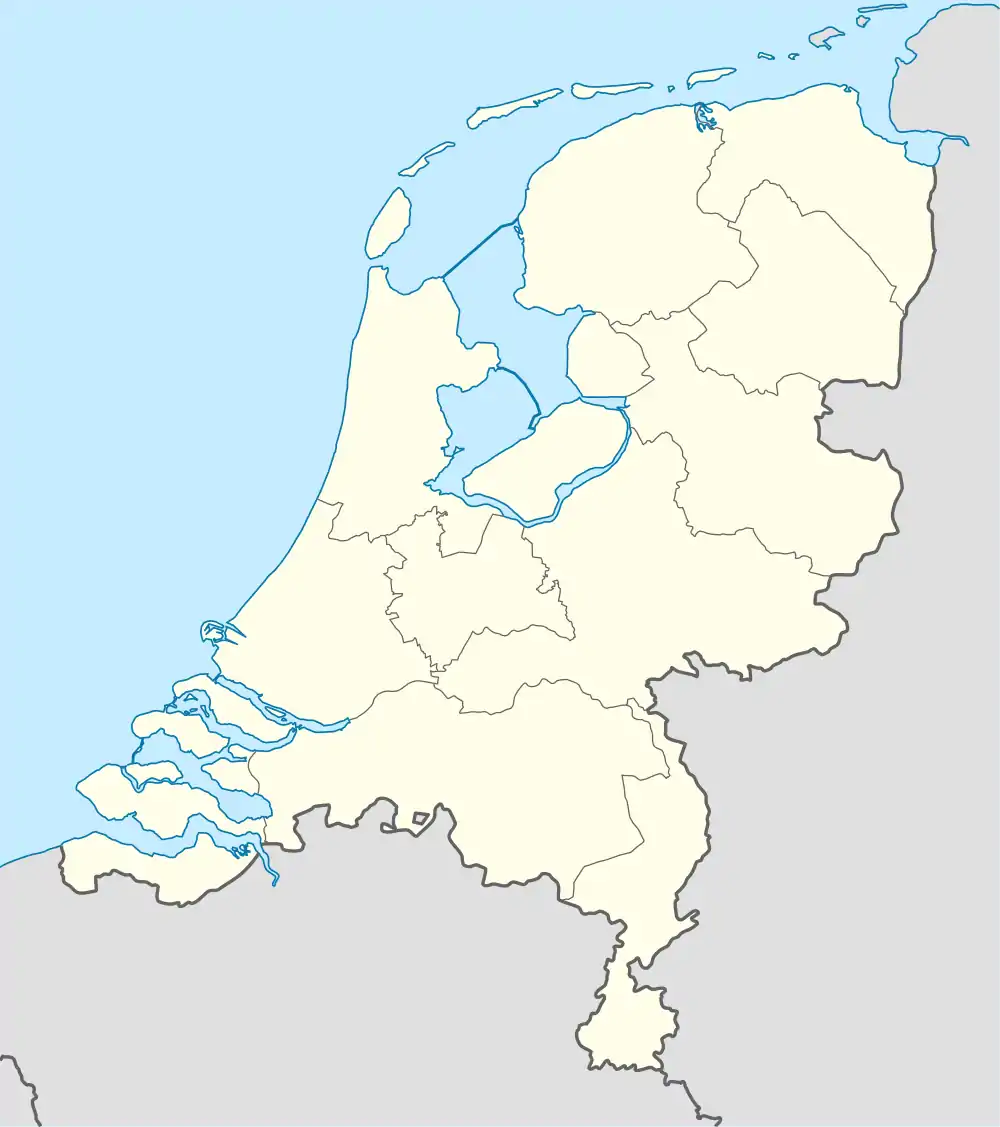Harmelen train disaster
The Harmelen train disaster, on 8 January 1962, was the worst railway accident in the history of the Netherlands. Harmelen, in the central Netherlands, is the location of a railway junction where a branch to Amsterdam leaves the Rotterdam to Utrecht line. It is common at high-speed junctions to avoid the use of diamond crossings wherever possible – instead a ladder crossing is employed where trains destined for the branch line cross over to the track normally employed for trains travelling in the opposite direction for a short distance before taking the branch line.
| Harmelen train disaster | |
|---|---|
 Aftermath of the disaster | |
 | |
| Details | |
| Date | 8 January 1962 |
| Location | Harmelen, Utrecht |
| Coordinates | 52°06′17″N 4°57′23″E |
| Country | Netherlands |
| Operator | Nederlandse Spoorwegen |
| Incident type | Head-on collision |
| Cause | Signal passed at danger |
| Statistics | |
| Trains | 2 |
| Passengers | ~1080 |
| Deaths | 93 |
The accident happened 18 months after the Woerden train accident, the derailment of a British furlough train nearby. Previously the Weesp train disaster of 1918 had been the worst railway disaster in the Netherlands.
Accident
Shortly before 9.20 a.m. on Monday, 8 January 1962, a foggy day, a Rotterdam to Amsterdam local-train consisting of electric multiple unit Mat '46 sets 700 and 297 was authorised to carry out this manoeuvre, protected by a red signal to stop trains approaching from Utrecht. The EMU was travelling at approximately 75 km/h (47 mph). Simultaneously, an express train from Leeuwarden to Rotterdam, hauled by electric locomotive 1131, was approaching at 107 km/h (67 mph).
Perhaps because of the foggy weather, the driver of the train from Utrecht missed the warning yellow signal and applied the emergency brake when he saw the red signal protecting the junction, far too late to prevent a near head-on collision between the two trains. Six coaches of the Amsterdam train and three on the express train were destroyed.
Victims
Both trains were heavily packed – 180 occupants in the six-carriage multiple units and circa 900 aboard the 11-carriage express train, made up of seven recent vehicles and five old Mat '24 trailers.[1] Of approximately 1080 people aboard the trains, 93 lost their lives, including the drivers of both trains.
Aftermath

The accident spurred the installation on Dutch railways of the system of automatic train protection known as Automatische treinbeïnvloeding (ATB), which automatically overrides the driver in such a "signal passed at danger" situation.
The junction was later rebuilt as a flying junction in the 1990s.
Memorial

On 8 January 2012 Pieter van Vollenhoven unveiled a memorial for the victims of the disaster, which on that day, had taken place exactly fifty years ago. The organization of the disclosure was owned by the local "Dorpsplatform" Harmelen.
The monument was designed by Taeke Friso de Jong, an artist from Kamerik. The mason was Maurice van Dam from Woerden. The design consists of two stone slabs that are tilted relative to each other and contain the names of the 93 victims. Looking through the two slabs discloses the actual spot where the accident happened. A red stone plinth, bearing a body that represents the victims, is placed in the middle in front of the two slabs. Three names on the slabs were spelled incorrectly; the names are copied from contemporary handwritten police reports. The mistakes have since been corrected.[2]
Similar accidents
- 1976 Schiedam train accident (South Holland, Netherlands)
- Beresfield rail disaster (New South Wales, Australia)
- Violet Town railway disaster (Victoria, Australia)
References
- "Seinarm, de site voor de Nederlandse modelspoorder. > Staal > Plan E". www.seinarm.nl. Retrieved 2021-07-19.
- "Spelfouten op monument". Archived from the original on 2016-03-04. Retrieved 2012-01-17.
Further reading
- Duin, Menno Joost van. (1992). Van rampen leren: een vergelijkend onderzoek naar de lessen uit spoorwegongevallen, hotelbranden en industriële ongelukken (in Dutch). The Hague: Haagse Drukkerij en Uitgeversmij. ISBN 90-71504-15-8.
External links
 Media related to Harmelen rail disaster on 8 January 1962 at Wikimedia Commons
Media related to Harmelen rail disaster on 8 January 1962 at Wikimedia Commons- Video on YouTube
- Danger Ahead! site (includes photographs of the disaster)